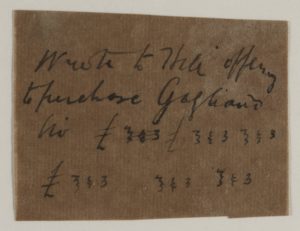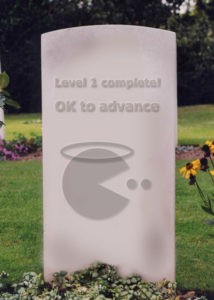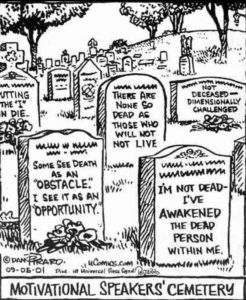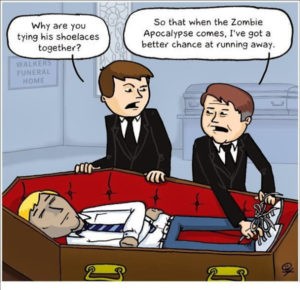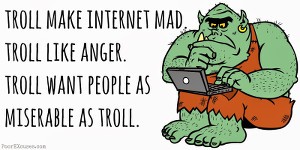Many angry arrows have been aimed in the direction of Cipher Mysteries of late (mostly by a single vociferous individual), asserting that it has got its moderation policy Just Plain Wrong.
Obviously, differences of opinion about what comments should be moderated in or out hardly amount to breaking news. But the reactive rhetoric attached to these attacks has recently reached a somewhat fevered pitch, where the blog posts being made about comment moderation had become much worse than the comments they were related to.

As a result, I thought it was high time I trawled the web to see what, as of mid-2016, is considered best practice for bloggers. After all, knowledge is power, ain’t it?
“The Blogger’s Code of Conduct”
In 2007, Tim O’Reilly proposed a Blogger’s Code of Conduct, to try to promote civility online (specifically in blogs). The six points (which he also tried to connect to badges) were:
1. We take responsibility for our own words and for the comments we allow on our blog.
2. We won’t say anything online that we wouldn’t say in person.
3. We connect privately before we respond publicly.
4. When we believe someone is unfairly attacking another, we take action.
5. We do not allow anonymous comments.
6. We ignore the trolls.
For all the good ideas in there, O’Reilly was quick to recognize that he had severely underestimated the size of the issues. In practice, each of his six points has a huge number of weak spots:
1. moderating is full of edge cases (e.g. at what point does someone expressing a strong feeling about something actually become abusive? If someone doesn’t like a comment, does that mean that that comment is genuinely offensive or do they just not like to see opinions different to their own? So, to what notional person should any given comment be deemed offensive? etc etc) to the point that the notion of a single catch-all “responsibility” umbrella is woefully inadequate.
2. it is ridiculously easy for someone to cut and paste what you have written or commented or moderated and quote it out of context to deliberately distort what you said or allowed to be said. And (moreover) to say in person where? In a bar, in a church, at a football match? Given that context forms ~90% of communication, it’s almost impossible to write posts or comments that cannot be taken out of context and given a new, offensive meaning.
3. for a whole bundle of reasons, connecting privately first is something that almost never happens.
4. for a different (but very similar) bundle of reasons, it is extraordinarily rare for anyone to step forward to “take action”. Again, this almost never happens.
5. it is very hard to prevent anonymous commenting. Even tiny children are now indoctrinated never to disclose their real names or any information that might help identify them online: and from there it is the smallest of technical steps to full anonymity. It turns out that anonymity is less of a true/false condition than a spectrum of ‘anonymousness’ that is defined mainly by the cost of de-anonymizing that anonymity. So: how much time, effort and money should a moderator have to put in to determine what degree of anonymity a specific comment is employing?
6. trolls just like attention, and have many mechanisms for baiting people just below the threshold of not-OKness. At what point does a commenter become a troll? And anyway, according to whom are they a troll? And how can the people making that judgement tell that they are a troll? And what recourse can someone have if they are incorrectly accused of being a troll?
So it turns out that the main problem with O’Reilly’s proposal is that almost every aspect of blogging is a grey area, and that his approach for trying to make everything in the blogosphere OK is just too rigid and (as some critics put it) rather too corporate. He says that he’s more interested in promoting civility than in enforcing political correctness, but given the extraordinarily wide range of conversations and interactions that blog posts enable, imposing a single model upon them all seems destined never to work.
In my opinion, his heart was in the right place but he underestimated the scale and practical difficulties of the real-world problems by a factor of a hundred, to the point that his proposals weren’t fit for purpose.
Responsible Blogging
Numerous other angles have been proposed over the years. A post by Daniel Scocco proposed 10 Rules for Responsible Blogging, but which I think are far more concerned with transparency and professionalism than ‘responsibility’ as such:
1. Check your facts
2. Respect Copyright Law
3. Consider the implications
4. Control the comments on your blog
5. Give credit where credit is due
6. Disclose professional relationships
7. Disclose sponsored posts
8. Be transparent with affiliate links
9. Respect Tax Law
10. Avoid “blackhat” methods
Of course, many of these issues are covered by actual legislation.
For example, according to this UK ethical blogging blog, the Office of Fair Trading would like everyone to understand that “The integrity of information published online is crucial so that people can make informed decisions on how to spend their money. We expect online advertising and marketing campaigns to be transparent so consumers can clearly tell when blogs, posts and microblogs have been published in return for payment or payment in kind. We expect this to include promotions for products and services as well as editorial content.”
But this is more of a legislative angle than anything else, and many of the interesting questions are more to do with blogging ethics.
Rebecca Blood’s “Weblog’s Ethics”
Rebecca Blood’s take on Weblog Ethics is a slightly more journalistic angle:
“1. Publish as fact only that which you believe to be true.”
“2. If material exists online, link to it when you reference it.”
“3. Publicly correct any misinformation.”
“4. Write each entry as if it could not be changed; add to, but do not rewrite or delete, any entry.”
“Post deliberately. If you invest each entry with intent, you will ensure your personal and professional integrity. […] History can be rewritten, but it cannot be undone. Changing or deleting words is possible on the Web, but possibility does not always make good policy. Think before you publish and stand behind what you write. If you later decide you were wrong about something, make a note of it and move on.”
“5. Disclose any conflict of interest.”
“6. Note questionable and biased sources.”
While Blood is solid on the foundations of positive blogging here, I think it’s fair to say that she doesn’t offer a very practical guide to the problematic issues of moderating and offence that caused O’Reilly’s proposal ship to hit so many rocks.
“A Bloggers’ Code of Ethics”
Even though it was clearly adapted from what was originally a journalism code of practice, there’s a lot to like about the Bloggers’ Code of Ethics, that came courtesy of CyberJournalist.net:
“1. Be Honest and Fair”
* Never plagiarize, but always identify and link to sources where practical.
* Ensure that what you write does not misrepresent, oversimplify or highlight incidents out of context.
* Never distort photos without disclosing what has been changed, and label all montages etc.
* Never publish information you know is inaccurate — and highlight doubt if publishing questionable information.
* “Distinguish between advocacy, commentary and factual information”, and don’t misrepresent fact or context.
* “Distinguish factual information and commentary from advertising” and shun anything blurring the boundaries.
“2. Minimize Harm”
* “Treat sources and subjects as human beings deserving of respect.”
* “Show compassion for those who may be affected adversely by Weblog content. Use special sensitivity when dealing with children and inexperienced sources or subjects.”
* “Be sensitive when seeking or using interviews or photographs of those affected by tragedy or grief.”
* “Recognize that gathering and reporting information may cause harm or discomfort. Pursuit of information is not a license for arrogance.”
* “Recognize that private people have a greater right to control information about themselves than do public officials and others who seek power, influence or attention. Only an overriding public need can justify intrusion into anyone’s privacy.”
* “Show good taste. Avoid pandering to lurid curiosity.”
* “Be cautious about identifying juvenile suspects, victims of sex crimes and criminal suspects before the formal filing of charges.”
“3. Be Accountable”
* “Admit mistakes and correct them promptly.”
* “Explain each Weblog’s mission and invite dialogue with the public over its content and the bloggers’ conduct.”
* “Disclose conflicts of interest, affiliations, activities and personal agendas.”
* “Deny favored treatment to advertisers and special interests and resist their pressure to influence content. When exceptions are made, disclose them fully to readers.”
* “Be wary of sources offering information for favors. When accepting such information, disclose the favors.”
* “Expose unethical practices of other bloggers.”
* “Abide by the same high standards to which you hold others.”
Is this approaching “Best Practice For Bloggers”? In many ways, it is, insofar as it points itself squarely at Honesty, Non-Harmfulness and Accountability, three things which are hard to disagree with. Yet at the same time, I have to say that it’s not really tackling the basics.
And there are some really big basics none of the above has managed to cover.
Irresponsible Blogging Practices
Most of the unethical blogging practices you’ll find described on the web are to do with not disclosing that certain blog content has been paid-for or sponsored in some way. Which is fair enough.
Yet there are many more blogging practices going on out there that I would consider acutely unethical. And having recently found myself on the receiving end of what I would consider a long string of them, I thought it might be helpful to compile a list:
1. Theft, Misrepresentation, and Libel
* Writing posts culled from posts and comments all over the web
* Never giving attribution or credit to your sources
* Constantly blurring the boundaries between truth, speculation, and outright fiction
* Never posting anything that can be easily separated out into truth, speculation, and outright fiction
* Exaggerating your website’s own importance and telling lies about other people’s websites
* Writing posts asserting that a particular individual who disagrees with you has a specific mental disorder, helpfully cutting and pasting sections of text from Wikipedia to help demonstrate the accuracy of that claim [Two people have done this to me in the last six months or so, with two very different disorders].
* Telling hateful lies about other people, but then quietly deleting those lies from the website “once they have served their purpose”.
2. Baiting, Deception, and False Closure
* Writing posts aimed squarely at an individual.
* Writing posts openly baiting a particular individual.
* Writing posts openly baiting a particular individual, waiting for them to comment, then completely changing the sense of the text in the post to try to present the commenter in a bad light.
* Responding to critical or comments with a snarky, hostile, superior comment and then immediately closing comments on that post.
* Selectively editing (or often outright deleting) commenters’ comments to remove any sections that don’t happen to paint the blogger/moderator in a favourable light.
* Closing comments and then selectively editing the comments to remove any that are not favourable to the moderator.
* Claiming ‘victory’ in comments, then deleting any incoming comments that might run counter to that claim.
* Changing the title of posts to aim them (after the event) at individuals.
* Changing the title of baiting posts to pretend (after the event) that it wasn’t aimed at individuals.
* Putting up unbelievably hostile, libelous, bait-filled posts but then quietly deleting them if things get too hot.
3. Trolls, Stalkers, and Safe Havens
Sadly, you may recognize some or all of the following patterns of behaviour:
* If you leave a comment on my website that doesn’t accord 100% with my views, I will either delete your comment or post a hostile rebuttal comment specifically designed to piss you off
* If you disagree with me, you are a troll
* If you disagree with people who blogs I admire, you are a troll
* If you use a proxy server, you are a troll
* If you sympathize with someone I don’t trust, you are a troll
* If I believe you are a troll, I feel justified in openly publishing your IP address(es) and your email address(es)
* If I believe you are a troll, I feel justified in saying anything I like to you, no matter how disgusting
* If you publish a comment on your website from people who don’t like me, they are trolls and you are a disgrace
* If you publish a comment about me from someone I have loudly pissed off on my blog, your website is nothing but a safe haven for trolls and you personally are a despicable, unethical pervert.
* If I think your website acts as a safe haven for trolls, I will denounce you as a despicable troll-lover to all the domain experts whom I know you rely upon: and I will make sure that those domain experts are so disgusted by your sympathy for such modern-day devils that they don’t return your emails or calls. But that’s not actually “libel”, because… I say so.
Oh, and if you honestly think I’m making any part of the above three sections up, you have no idea at all about the depths a few irresponsible people can – and do – plumb.
“Best Practice For Bloggers”, Really?
Tim O’Reilly’s idealistic-sounding proposal for more civility in the blogosphere seems a world away from my own experience of the last year (particularly during the last few months): Daniel Scocco’s “responsible blogging” barely touches on my concerns, while Rebecca Blood and CyberJournalist.net’s angles on blogging ethics seem to assume everyone out there is journalistically sparring according to a rather refined set of Marquis of Queensberry-style rules.
Clearly they’re not.
What people keep telling me to do when I yet again come up against what to me – and probably to almost all other bloggers, I believe – seems like unbelievably irresponsible and unethical blogging is to just ignore it. Turn the other cheek. Take no notice: walk away.
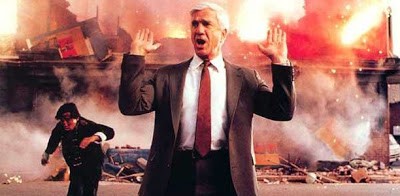
Step away from the burning firework factory, sir. Nothing to see. Even if the fireworks do happen to be vividly writing your name across the virtual sky.
But there’s something deeply unethical about saying and doing nothing. As the CyberJournalist.net says, all bloggers should have an ethical obligation to “expose unethical practices of other bloggers.”
And yet the behaviour I have encountered would be unrecognizable to almost all other bloggers. Does what I have had thrown at me even fall in the same category as blogging? Or is it something that has grown into a sustained campaign of intensely personal, bitter hatred, merely shaped into what superficially resembles blog form? [*]
For me, the best practice for bloggers isn’t anything so idealistic as the four accounts I referred to above: but rather to read the list of Irresponsible Blogging Practices above and make sure you never – ever, ever – do any of it whatsoever. For any reason.
P.S.
[*] For the record, I don’t “loathe” or even “hate” the person who has been doing this. I just wish he would spend even 1% as much time facing himself in the mirror as he does trying to devise loathsome new ways to attack me.



